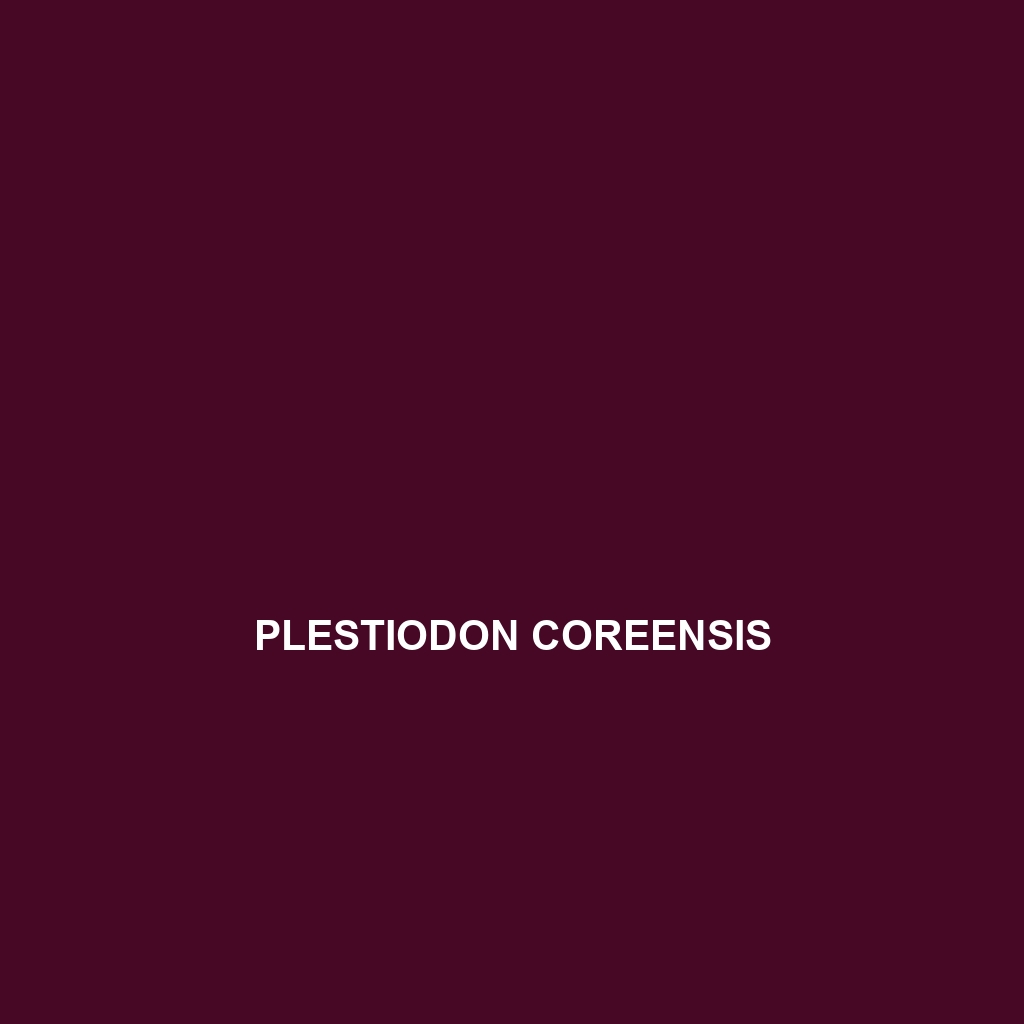Common Name
Plestiodon coreensis
Scientific Name
Plestiodon coreensis
Habitat
Plestiodon coreensis, commonly known as the Korean skink, is primarily found in the temperate forests and grasslands of the Korean Peninsula, specifically in South Korea. These lizards favor areas with ample sunlight, typically dwelling in open woodlands, shrublands, and sometimes urban gardens. The climate in these regions is characterized by four distinct seasons, including cold winters and hot, humid summers. The skinks are adapted to thrive in these environments, often seen basking in the sun during the day. Additionally, they can be found in rocky outcrops and under leaf litter, which provide shelter and humidity necessary for their survival.
Physical Characteristics
The Plestiodon coreensis is a medium-sized lizard, generally measuring about 15 to 25 centimeters in length. It features a slender body with a flat head and a long tail that can be easily autotomized when threatened. The coloration of this species can vary; however, they typically exhibit a dark brown or grayish body adorned with lighter stripes running along the length of their sides. The skin is smooth and shiny, contributing to their striking appearance. These characteristics, along with their distinctive elongated limbs and sharp claws, help them navigate through their natural habitat efficiently.
Behavior
As a diurnal species, Plestiodon coreensis is most active during daylight hours. They exhibit a range of behaviors from basking in the sun to foraging for food. Socially, these skinks are generally solitary, although they may sometimes be seen in small groups, especially during the breeding season. They tend to prefer rocky areas and decaying wood piles, which serve as hiding spots from predators. During mating rituals, males may display aggressive posturing and engage in territorial displays to attract females. Their behavior also includes defensive strategies, such as bluffing or fleeing when threatened.
Diet
Plestiodon coreensis is primarily insectivorous, meaning that its diet consists mainly of insects such as beetles, ants, and caterpillars. They also consume spiders and other small arthropods. Occasionally, they may feed on plant material, categorizing them as facultative omnivores. This diverse diet allows them to adapt to fluctuations in food availability within their habitats. Their feeding patterns include foraging on the ground and actively hunting for prey, showcasing their agility and speed.
Reproduction
The reproductive cycle of Plestiodon coreensis typically occurs in late spring to early summer. Mating is initiated through courtship rituals, where males engage in head bobbing and displays of coloration. After mating, females will lay between 4 to 15 eggs in sheltered locations such as under rocks or within leaf litter. The eggs have an incubation period of approximately 60 to 75 days, depending on environmental conditions. Once the hatchlings emerge, they are independent and receive no parental care, showcasing the species’ reproductive strategy aimed at maximizing offspring survival without direct investment from adults.
Conservation Status
Currently, Plestiodon coreensis is evaluated as of “Least Concern” according to the IUCN Red List, primarily due to its relatively stable population and wide distribution in Korea. However, habitat loss due to urbanization and agricultural expansion poses a potential threat to their populations. Conservation efforts are crucial in safeguarding their habitat and ensuring sustainable environments where they can thrive. This includes habitat restoration projects and public awareness campaigns about the ecological roles of these lizards.
Interesting Facts
One of the unique adaptations of Plestiodon coreensis is its ability to autotomize its tail when under attack, which can distract predators and allow the skink to escape. Additionally, these lizards showcase fascinating color variations that vary based on age and environment. Younger skinks often exhibit brighter coloration, enhancing their camouflage among the foliage, while adults tend to have more subdued hues.
Role in Ecosystem
Plestiodon coreensis plays a vital role in its ecosystem as both a predator and prey. As insectivores, they help to control insect populations, thereby maintaining a balance in the food web. Additionally, they provide a food source for various predators, including birds of prey and larger mammals. By contributing to the health of the ecosystems they inhabit, these skinks serve as indicators of environmental quality, showcasing the overall biodiversity present in their habitats.
